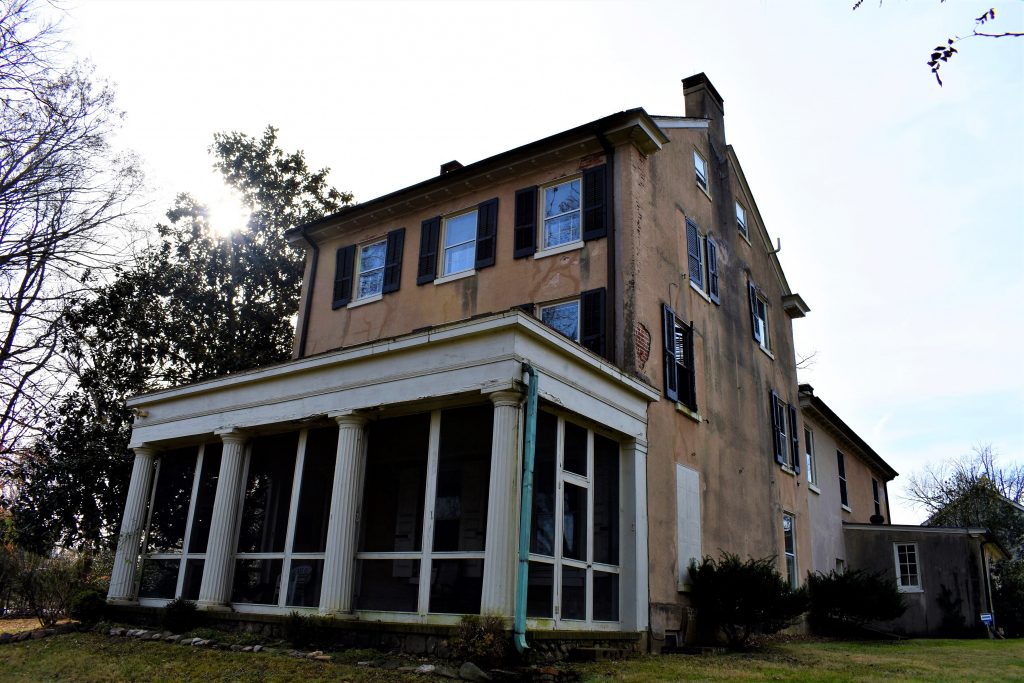Night and Day: A UD student’s first impressions of the Cooch Homestead
UD students envision a new future for Cooch’s Bridge Historic Site
Students from the University of Delaware learning what it takes to develop plans for a historic site will be sharing their thoughts with the Delaware Division of Historical and Cultural Affairs (HCA), its supporters, and its newsletter subscribers through a series of articles the students penned about their time spent proposing ideas for the Cooch’s Bridge Historic Site near Newark.
The student authors are from a class taught in Spring 2024 by HCA’s Historic Sites Team Manager Daniel Citron and Engagement and Collections Manager Meg Hutchins.
Check out the first student article by Margaret Miller below.

Night and Day: My first impressions of the Cooch Homestead
By Maggie Miller
When I heard that my historic site management course would be meeting off-campus at the Cooch Homestead, part of Cooch’s Bridge Historic Site for our first class session, I had mixed feelings. Though the opportunity to explore another part of Delaware intrigued me, the logistical complications were enough to make me, an over-committed college student, roll my eyes. Who was going to drive me? When was I going to eat dinner? What was this “Cooch Homestead” anyway? All my reservations fell away, however, as soon as we turned off Old Baltimore Pike and the house emerged from the protective layer of trees that had made it invisible from the road. It stood imposing against the dusky sky, and my classmates and I slowly spun around on the brick walkway to get a full picture of the world we were transported into. Of course, it being February, it was dark almost as soon as our 6 p.m. class began. Nothing a few flashlights couldn’t fix, however, and so we set off to take a spin around the property, surveying the outbuildings in the cold February night. Though it felt silly to take an outdoor tour in the dark, experiencing the homestead in that way gave me a sense of what it must have been like to occupy the space 24/7 and truly live and work on the property. As the semester wore on and the clocks sprung forward, suddenly new corners of the house were illuminated. For every extra minute of sunlight, I uncovered a new layer of history. This constant discovery and rediscovery emphasized that this was a complex site with many stories to tell. The late 20th century kitchen, for example, stands not far from the icehouse — separated by 50 feet and a few centuries at the same time.
These visible layers of history are part of what make the Cooch Homestead such an interesting site to interpret. The property’s current status as under renovation also offers a unique opportunity for students to engage in transforming a private home into a public space. This moment of limbo offers a window into how our perceptions of spaces change merely by their changing labels, as well as the fickle nature of museum interpretation. There is no true interpretation of a space precisely because this house, once very clear in its original purpose to house its now long-gone inhabitants, is no longer tied to a single story. Instead, the space can take on any of the histories we’ve uncovered, and its reception by the public is shaped entirely by how we choose to present it.
Just as my view of the house gradually changed from the first flashlight-led tour of the property, our collective understanding of the Cooch Homestead has and will continue to change as we discover more about its history and decide whose stories we want to tell within the space — with the lasting understanding, of course, that it could all change with simply the flick of a flashlight.
Maggie Miller (she/her) is an undergraduate student in her junior year studying art history, French, museum studies and Africana studies at the University of Delaware.


